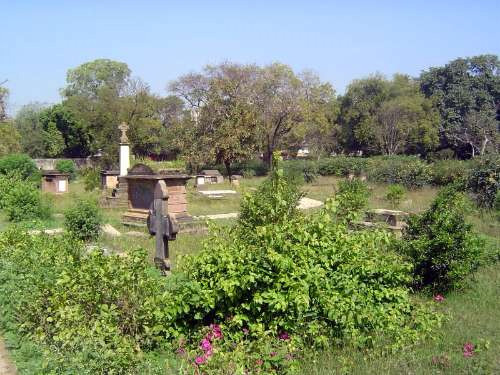Progress Vs. History: Proposed Lucknow Metro Project In India May Destroy British War Graves

Plans for a new railway line in northern India threaten to destroy the graves of 2,000 British soldiers who died during the Sepoy Rebellion (also known as the Indian Mutiny) of 1857.
Hundreds of British descendants of the dead have made pilgrimages to the graves over the years. Most of the men died when they were trapped inside the Lucknow Residency – the home of the British resident general, Chief Commissioner Sir Henry Lawrence -- during the Siege of Lucknow.
Among those buried there are Maj.-Gen. Sir Henry Havelock, who led the British army during the 1857 war and has a statue in Trafalgar Square in London; and Maj. William Hodson, founder of the Hodson’s Horse irregular cavalry, the Daily Mail reported.
British women and children were also killed in the siege.
One of the descendants, Sir Mark Havelock-Allan, great-great-grandson of Henry Havelock, a judge who holds the title of the 5th Baronet of Lucknow, has expressed his opposition to the railway construction plan.
While the gravesites are protected by the Archaeological Survey of India, municipal officials in the city of Lucknow in Uttar Pradesh state said the rules safeguarding the cemeteries should be waived in favor for the metro line.
Under AIS rules, no construction can proceed within 100 meters (330 feet) of a historical monument.
P.K. Mishral, superintendent of the Lucknow branch of AIS, told the Daily Telegraph: "These are Christian graves of British soldiers and officers who were killed in the mutiny. There was heavy shelling and many died. The centre of the battle was the Residency. People come to visit and they also visit the graves. It's beautiful and we maintain them to prevent further decay. We have to protect all these things relevant to our history. It's just history and nothing else.”
But some officials, noting the dead were enemies of India, are incensed that the graves are impeding the modernization of the city and the development of badly needed infrastructure improvements.
Utter Pradesh Chief Minister Akhilesh Yadav complained to the Hindustan Times: “We are unable to take a call on deciding the alignment because the graves of some unknown foreigners killed in the freedom struggle of 1857 are in close vicinity. You cannot [even] see the graves from outside. They are tucked away in a corner inside a crumbling structure."
The Lucknow metro transit has been in the planning stages for several years, but has been bogged down and delayed by logistical obstacles and financial concerns.
Last month the Times of India reported that metro officials may seek to bring down the cost of the Lucknow railway by constructing just one corridor instead of the originally envisioned two.
The issue of the graves versus the railway reflects decidedly partisan, nationalistic attitudes. Comments to the Hindustan Times (from Indian readers) included such gems as: “Dig out all these useless graves which are wasting precious land, [especially] those of traitors and foreign looters” and “[Dig] that grave or do whatever. I want metro in my city.”
Another Indian reader proposed the following compromise: “Very simple, relocate the graves.”
Conversely, some British readers of the Daily Mail seized on the issue to attack Prime Minister David Cameron, who is currently visiting India.
One sneered that Cameron "will probably offer to dig up the graves personally if it secures India arms orders and sit back [and] do nothing,” while another complained, “So what’s David going to do about this then, oh I've just remembered he only does things for other countries, never the British.”
© Copyright IBTimes 2025. All rights reserved.





















